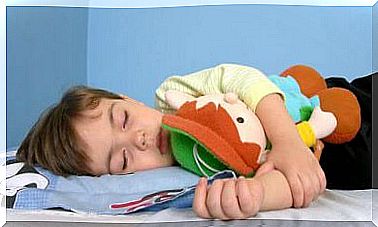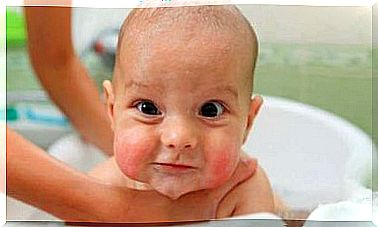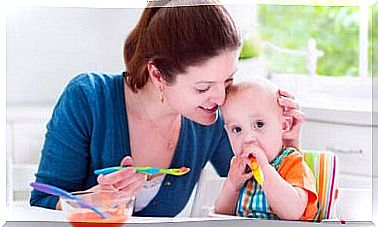Try These 4 Experiments With Water For Kids – Parenthood

During their lifetime, our children must learn some fundamental laws of physics and chemistry. What could be better than learning them through children’s games and experiments with water.
There are things you can do with your child at home; so you can educate him in the magical world of science in an entertaining way.
Experimentation is the best way to explain science. For children it’s great because it arouses their curiosity and their interest in research on scientific phenomena.
Experiments with water for children
Here are some science-based activities that you can have fun with your child at home with:
1. The escaping pepper
For this experiment, you need:
- Water
- From a deep dish
- Ground pepper
- Liquid soap
Procedure:
- Put a little water in the dish.
- Sprinkle the pepper over the water until it covers the surface.
- Take a drop of liquid soap and lightly soak the fingertip.
- Then, touch the surface of the water with your fingertip.
By performing this last step, you will see how the pepper quickly moves away from where the water has been touched; one part will fall to the bottom while the other part will go to the edges of the dish.
What’s going on ?
Water molecules are united with each other by bonds; this allows the surface layer to let a light substance rest on it.
This is called surface tension and is what allows pepper to float. Then the detergent then reduces this tension by interfering with the cohesive forces.
When this tension is broken and the pepper has no way to be supported, it begins to pull away, either to the bottom of the dish or to the edge.
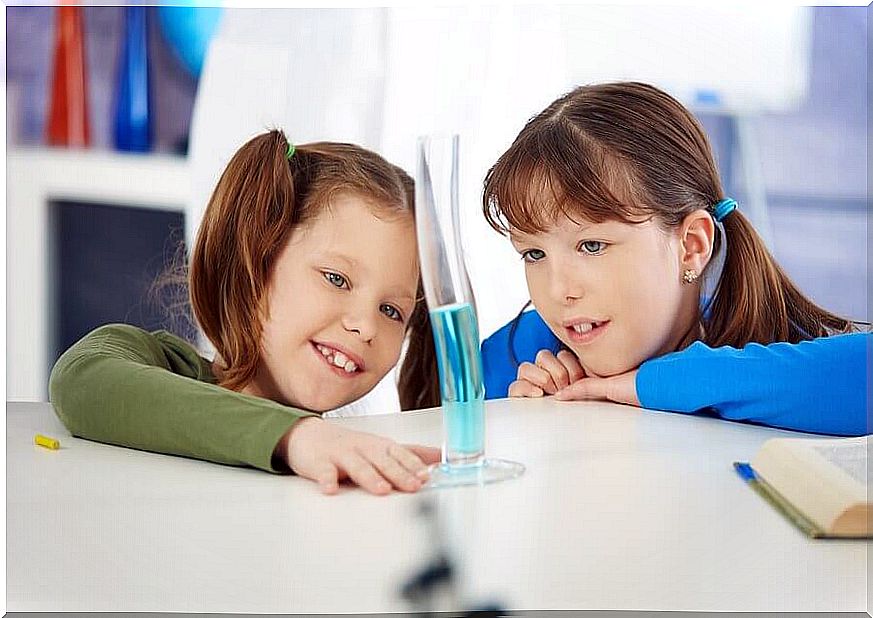
2. Rainbow in a bottle
You will need:
- A clear plastic bottle
- of honey
- Corn syrup
- Dishwashing liquid
- Some water
- Alcohol
- Food coloring
Procedure:
- With the dyes, give a little color to the corn syrup, water, oil and alcohol; use a different dye for each liquid.
- Pour the liquids into the bottle; start with honey and then continue in this order: corn syrup, dishwashing liquid, water, oil and alcohol. Use enough to form a layer of at least 1 centimeter.
- Liquids are arranged in layers without mixing with each other; they thus form a magnificent rainbow that we can admire in the light.
What’s going on ?
Density is the measure of the force with which molecules are concentrated in a solid, liquid or gas object. Each substance has a specific density and the experience is based on this difference.
Liquids with more molecules, that is, with a higher density, are heavier and will stay at the bottom of the bottle without mixing with others, while the lighter ones will stay at the top.
“The experience awakens children’s curiosity and investigative interest in scientific phenomena”
3. The water cycle
For this experiment, you need:
- A clear plastic bottle
- Some water
- Blue food coloring
- Felt-tip pens
Procedure:
- Draw the sky with the sun and some clouds on the top of the bottle.
- Pour a little water in the bottle without exceeding half and close it.
- Place the bottle where it will be exposed to the sun for a while.
- The water in the bottom evaporates on heating with the sun, it rises and begins to form water drops in the upper part of the bottle.
What’s going on ?
In the bottle, part of the water cycle is reproduced simply as in the earth; the sun heats the water, it rises in the atmosphere in the form of vapor and creates clouds which accumulate it.
This vapor present in the clouds condenses and, when it encounters a stream of cold air, it falls in the form of rain. This is one of the most widely proclaimed children’s water experiences.
4. Water that travels
The material for this experiment is:
- Some water
- 3 transparent containers of the same size
- Paper towels
- Blue and yellow food coloring
Procedure:
- Fill two of the containers halfway with water.
- Mix the water in one of the containers with yellow dye and the other with blue.
- Place the three containers in a row (empty in the middle).
- Fold two paper towels to make strips.
- Introduce one end of the strip into the container with yellow water and the other into the empty vase and repeat the same with the blue.
Observe how the water drains from the two end containers to the empty middle vase using the strips of paper and how it turns green.
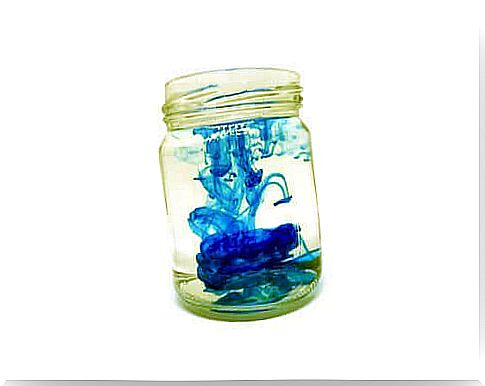
What’s going on ?
Water molecules unite with each other and with everything in contact with them; this is called membership. We can also see the capillarity; in other words, the ability of liquids to rise up into the spaces of a porous material.
In these experiments with children’s water, we can observe how the molecules stick to the kitchen paper while remaining attached to the rest of the liquid. We also see the mixture of two primary colors which form a new one.
Water is the essence of our life and of the planet. G hanks to these experiences with water for children, we can emphasize its importance and appreciate its properties.
These activities, in addition to being very economical and fun, are really educational. Their value is therefore fundamental.
Have a good time with your child by discovering the world around you without leaving the house. Open the door to the incredible path of science.
